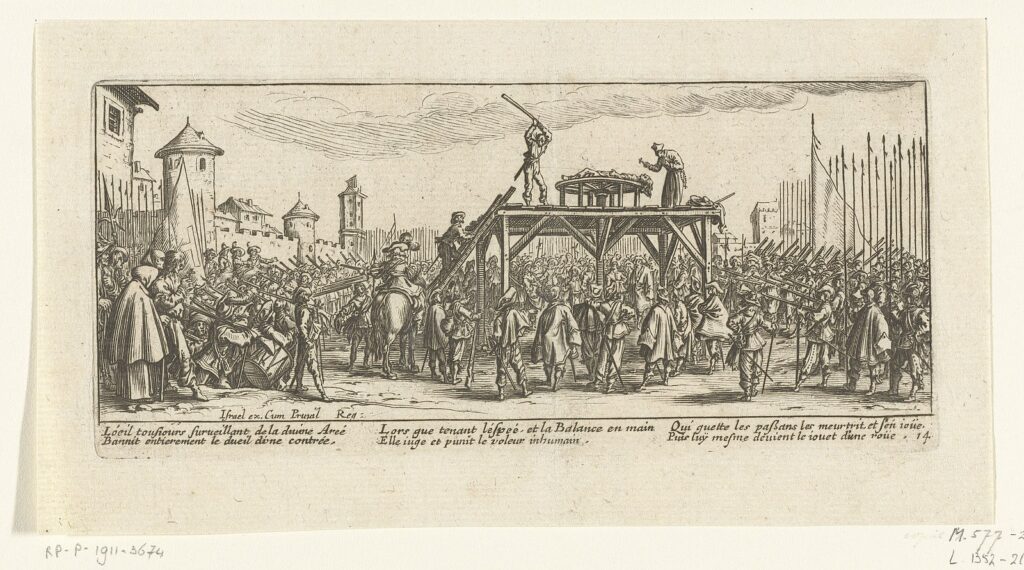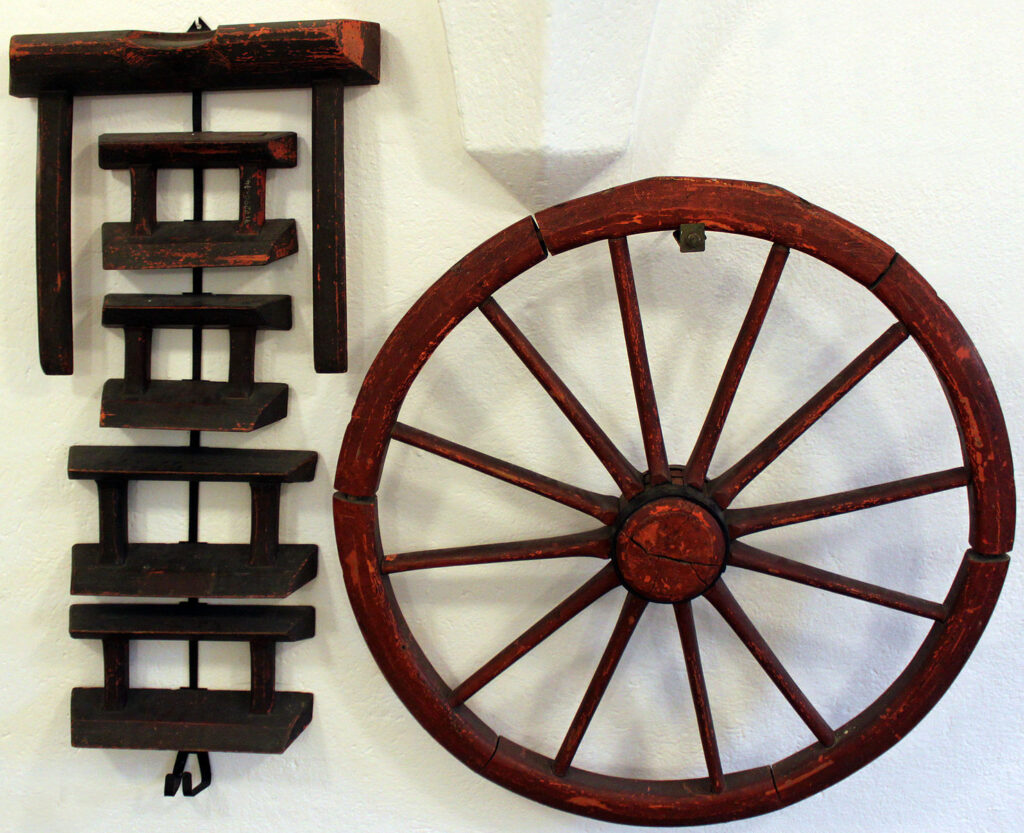In the long stretch of human history, few instruments can evoke as much dread and revulsion as the breaking wheel. The breaking wheel was a gruesome and torturous device.
Also known as the Catherine wheel, it was a macabre invention employed to inflict excruciating pain and death upon its victims. It originated in medieval Europe.
This brutal apparatus stands as a testament to the darkest corners of human cruelty and the methods employed in the pursuit of punishment and control.

Origins and Design of the Breaking Wheel
Although the breaking wheel’s origin can be traced back to antiquity, it did not become a widely popular method of torture until the medieval period.
The design of the wheel was as ingenious as it was horrifying. Shaped like a large wagon wheel, it featured radial spokes that extended from the central hub to the outer rim.
While the fundamental design of a wheel with spokes generally stayed the same, it had specific variations across different regions and time periods. Sometimes the wheel would have an iron rim to ease the process of crushing people’s bones.
Other wheels sometimes had a small blade emerging from the outside of the rim that would slice the victim as it rolled over their body. Whatever design could inflict more pain, executioners were prepared to exercise it.
In some instances, the wheel was mounted vertically. This allowed the victim to be rolled downhill while their limbs were systematically shattered. This method added an element of public spectacle, as spectators could witness the gruesome descent of the condemned individual.
The Brutal Execution Process
There were two ways that the wheel was used on its victims. As a torture device, the wheel was used to shatter bones and crush body parts. It was intended to instill as much pain in a victim as possible.
But it was also a method for torturous murder. Victims would be lashed to the wheel, and iron cudgels or hammers would be used to break their limbs. Sometimes they would be tied down and have the wheel rolled across their bodies.
The broken limbs of the victims would then be woven through the spokes of the wheel or they would be tied spread-eagled. The wheel would then be mounted on a pole, similar to a crucifixion.
Once erected, victims could be hanging for hours before finally passing away. They would experience a slow and agonizing death. Some cases document victims surviving for days, even up to a week.
After they passed, their bodies would remain on the wheels. This allowed scavengers to pick away at the bodies.
Punishment and Symbolism
The breaking wheel was not solely a means of inflicting physical suffering. It was also a symbolic instrument of punishment.
Beyond the brutal injury and death it delivered, the breaking wheel served as a visual representation of justice, dealt out to those deemed deserving of the harshest penalties. The broken wheel symbolized the shattered life of the condemned.
Their limbs were destroyed as a testament to the severity of their perceived crimes. Their corpses remained hanging on the faux crucifix. This would serve as a reminder to onlookers of the severity of punishment.
It also acted as a symbol of a sacred belief that the victims would be restricted from entering the cycle of resurrection. The wheel, therefore, served as not only a physical punishment but also a spiritual one that would be eternally damning. It was reserved for the worst criminals and deviants.

Application of the Breaking Wheel in History
In medieval Europe, the breaking wheel was employed as a method of execution for a range of offenses. These included murder, treason, and acts considered heretical by the church.
With such centralized authority during this period, it was essential to not only punish offenders but also send a message through the brutality of the punishment. The wheel’s application extended into the early modern period, with documented cases in Germany, France, and other European countries.
One infamous historical figure who faced the breaking wheel was Robert-François Damiens. In 1757, Damiens, who was a domestic servant to the crown, was subjected to a gruesome execution in Paris for attempting to assassinate King Louis XV.
His limbs were systematically broken on the wheel before he was ultimately drawn and quartered. He became the last victim of dismemberment, the punishment reserved for regicide.
Decline and Abolition
As societal attitudes towards punishment evolved, so did the methods of execution. Just as dismemberment was largely replaced with the wheel, the wheel in turn was replaced by less painful methods of torture and execution.
In the late 18th century, as the Enlightenment era ushered in new ideas about justice and human rights, there was a growing consensus that the brutal practices of the past were incompatible with an enlightened society.
The breaking wheel’s decline mirrored broader shifts in attitudes towards punishment and violence. This led to its eventual abolition in many European jurisdictions. The rise of more “humane” methods, such as the guillotine, marked a departure from the grisly practices of the past.
Rather than inflicting as much pain as possible, executions were reformed to make the process as quick as possible. Punishment became more about the finality of death for the victim, not the impact of the punishment on the social fabric.
Legacy and Reflection
The breaking wheel’s legacy is one of horror and barbarity. It was a stark reminder of the extremes to which human cruelty can extend in the pursuit of justice, vengeance, or control.
In contemporary times, the breaking wheel serves as a cautionary tale. It prompts reflection on the evolution of societal values and the ongoing quest for justice.
The gruesome details of its application remind us of the importance of human rights, dignity, and the imperative to seek justice without resorting to inhumane methods.
References
Fan, Ryan. “The Wheel — One of History’s Cruelest Forms of Torture.” Medium, May 9, 2021. https://medium.com/frame-of-reference/the-wheel-one-of-historys-cruelest-forms-of-torture-880ecaf8200b.
Wiesen, G. “What is the Breaking Wheel?” My Law Questions, November 10, 2023. https://www.mylawquestions.com/what-is-the-breaking-wheel.htm.

